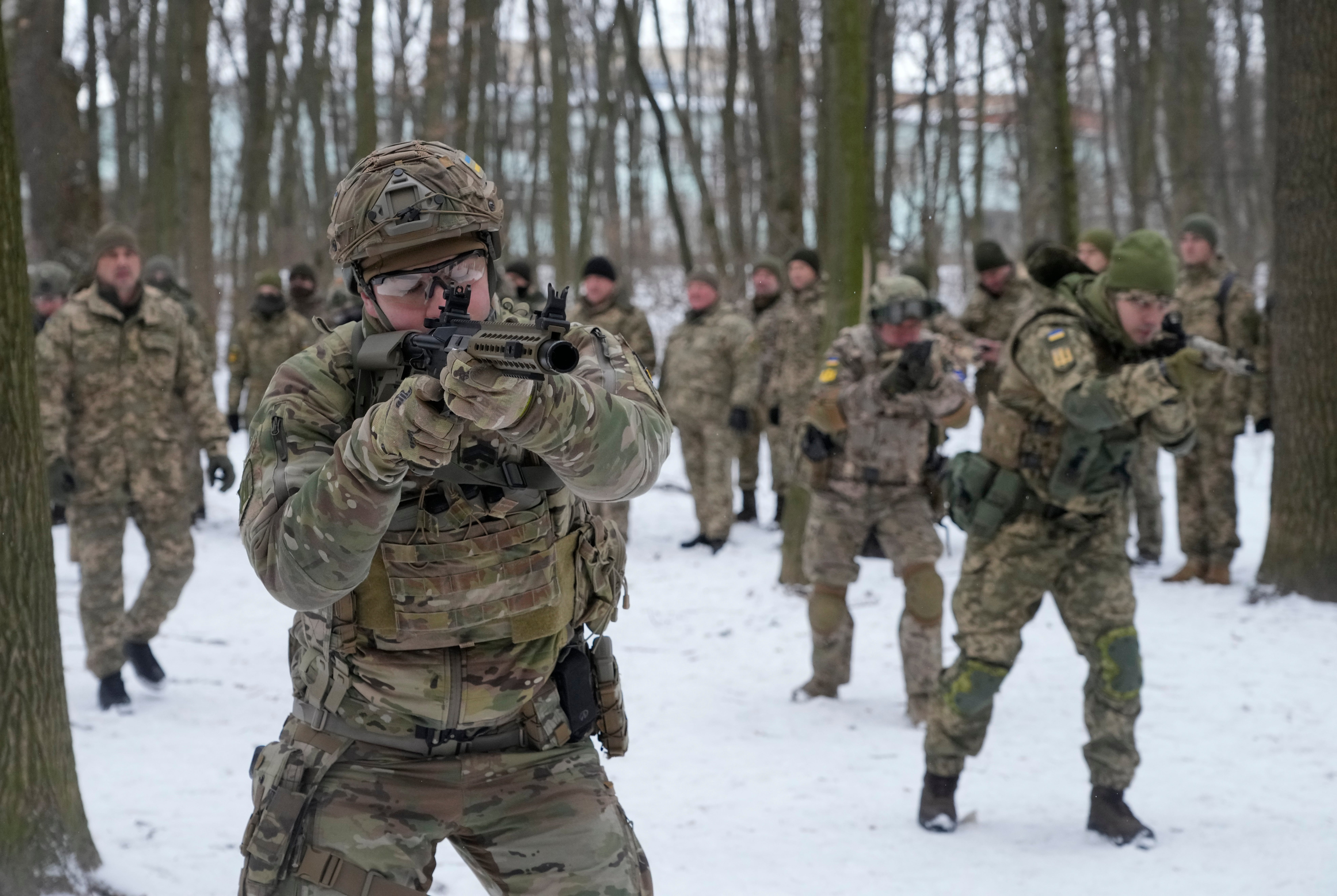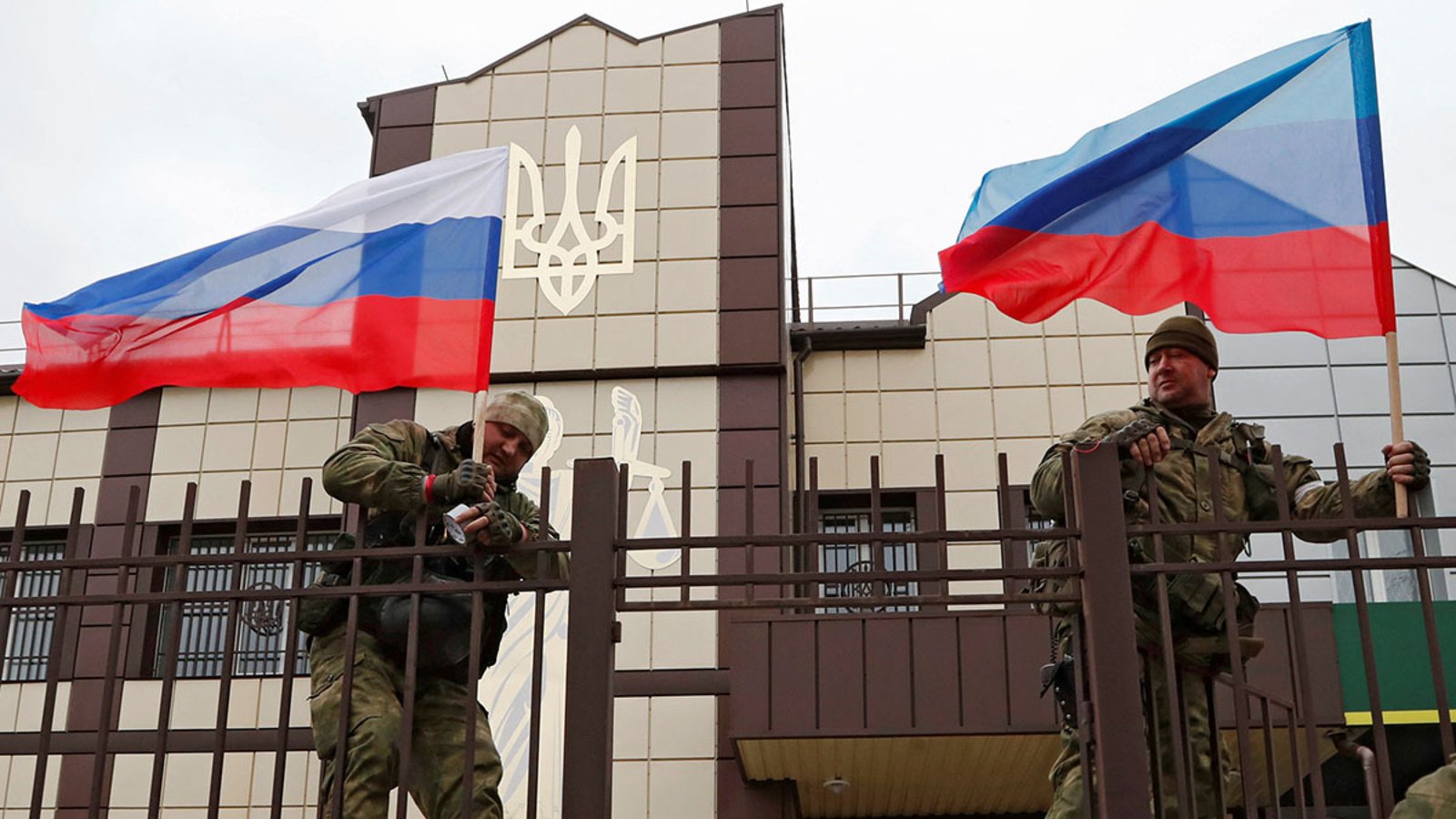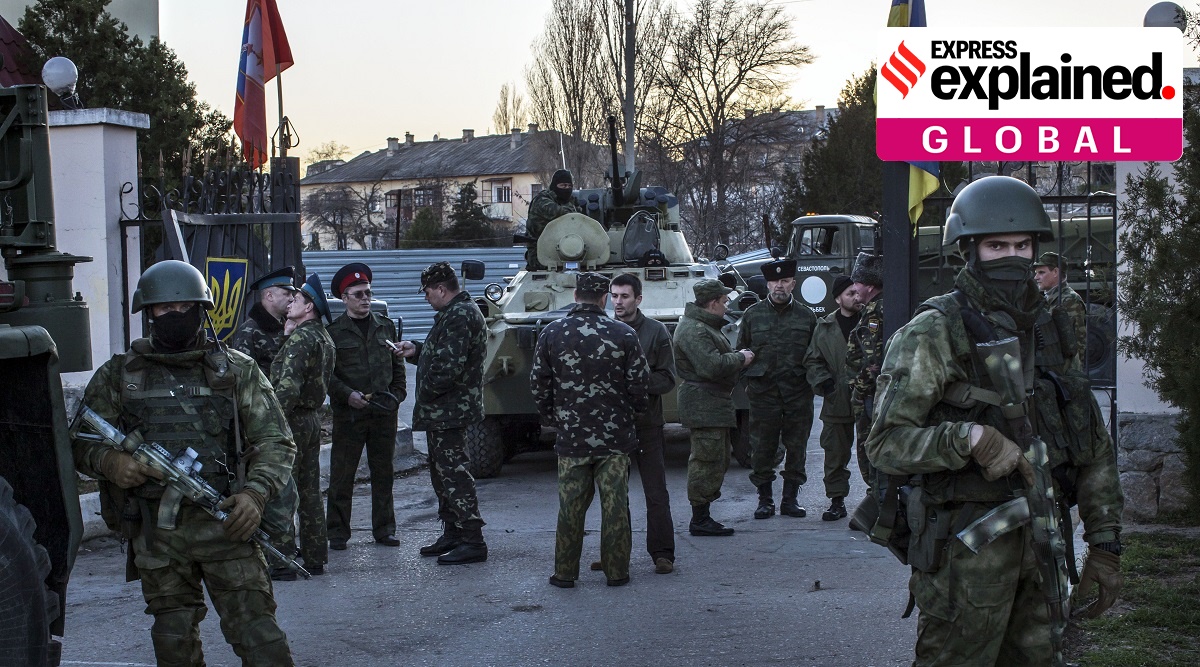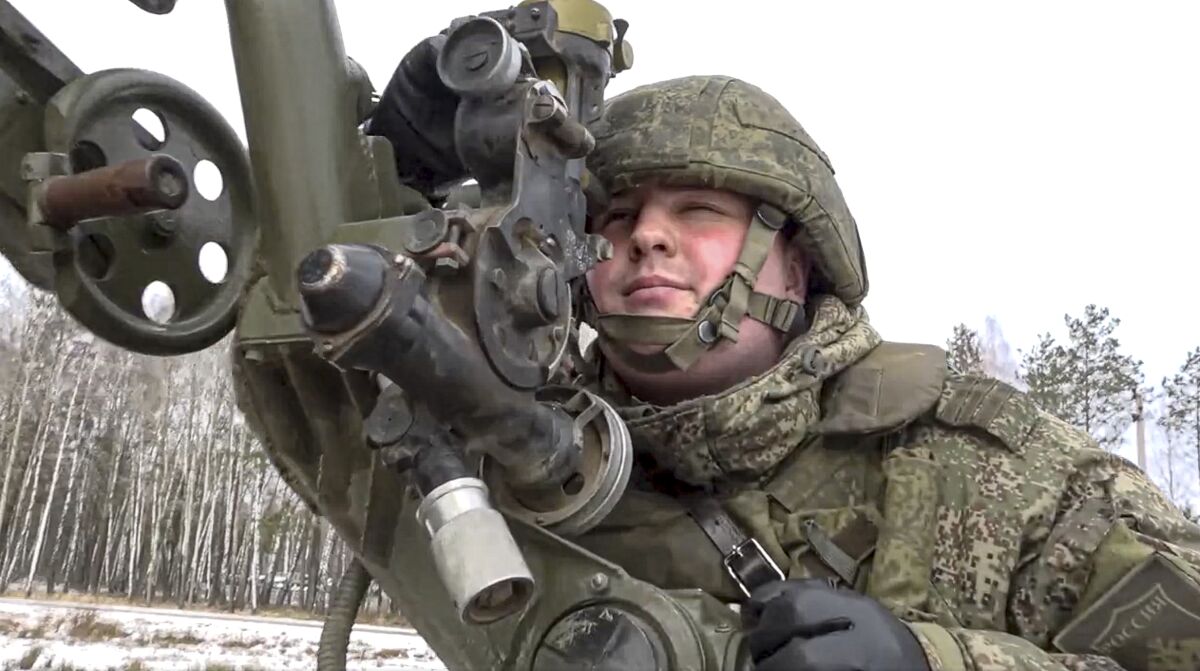Russia Military 2022 - Putin promised that those mobilized would receive a monthly salary of at least 195,000 rubles (about $2,800), which is about five times the average salary in Russia. Some regional authorities have promised to supplement this with their own bonuses.
Marek N. Posard is a military sociologist at the nonprofit, nonpartisan RAND Corporation and an affiliated faculty member at Pardee RAND Graduate School. Khrystyna Golynska - candidate graduate student at the Pardee RAND Graduate School and a policy research assistant at RAND.
Russia Military 2022
 Source: www.gannett-cdn.com
Source: www.gannett-cdn.com
The modernized army has become a key tool of Putin's foreign policy: conquering Crimea, intervening in Syria, keeping peace between Armenia and Azerbaijan, and just this month supporting a Russia-friendly leader in Kazakhstan. It is now in the midst of its most ambitious – and most sinister – operation: using threats and potential, lots of fear, violence, to bring Ukraine back into Moscow's sphere of influence.
Emphasis On Volunteers
It is Putin's most effective use of the military to push Russia back into the global relevance it has lost since the end of the Cold War. Mr Putin laid out the doctrine in 2018 when he used his annual State of the Nation address to unveil a new nuclear weapon capable of traveling at 20 times the speed of sound.
"If your unit is in Ukraine, your training expectations are probably pretty low," he said. “You just go into battle with very little experience, and most of the people who had experience are dead. So it just makes it a much less capable force."
For example, when the Ukrainian military shot down Russian spy drones, they discovered electronics and engines purchased from hobbyist drone companies in Western Europe, according to a report published in November by Conflict Armament Research, a British company that specializes in weapons tracking.
"I'm ashamed to admit that a few years ago I was surprised when the Caliber missiles flew out of the Caspian Sea and hit targets in Syria," said Lt. Gen. Ben Hodges, the former commander of U.S. forces in Europe.
 Source: cdn.cfr.org
Source: cdn.cfr.org
A Push For A Bigger Force
"It was a surprise to me, not only the possibilities, I didn't even know they existed." "The compliment we have to pay Russia is that it is a force that learns and adapts," General Breedlove said.
"Every time we see them in conflict, they get a little better and a little better." What is new is not only the improved Russian equipment, but also a new theory about how the Kremlin uses it.
The military has honed an approach that Dmytro Adamsky, an international security researcher at Reichman University in Israel, calls "cross-domain coercion": combining the actual or threatened use of force with diplomacy, cyber attacks and propaganda to achieve political goals.
. If Russia wants to secure Crimea's fresh water supply and block Ukraine's access to the sea, it can advance to Kherson from the south, and its forces advance to Melitopol to meet troops along the coast of the Sea of Azov.
A Much-Less Capable Force
Russia may want to create a land bridge to Crimea, for which it will be necessary to capture the port of Mariupol. In August, Putin ordered an increase in the size of the Russian army to 1.15 million from January 1.
And in September, he ordered the mobilization of 300,000 reservists to strengthen his forces in Ukraine. This number is counted as part of the current strength of the army. These soldiers are treated better. During a visit to the Defense Ministry in December, Putin boasted that the average lieutenant now earns just over $1,000 a month, which is better than the average salary in other industries.
 Source: images.indianexpress.com
Source: images.indianexpress.com
The federal government, he added, has spent about $1.5 billion subsidizing private housing for military personnel. In March 2014, after months of anti-government protests in Ukraine that ousted a pro-Kremlin leader, Russia invaded and annexed the Crimean peninsula.
A month later, pro-Russian separatists began seizing territories in Donetsk and Luhansk regions in eastern Ukraine. According to Kyiv, more than 14,000 people have died and millions have become refugees as a result of the ongoing hostilities there.
Russia And Ukraine At A Glance
Just by looking at the amount of money the two countries spend on defense, you can understand the gulf between them. Ukraine spent $4.7 billion in 2021, just over a tenth of nuclear Russia's $45.8 billion, according to the International Institute for Strategic Studies' (IISS) Military Balance report released last week.
Military professionalization is a time-consuming and expensive business. Currently, Russia has neither time nor money to fully professionalize the structure of its armed forces. In essence, Moscow is left with the power it has, not the power it would like.
Even if it succeeds in taking control of territory in Ukraine, the Russian military's underlying professionalization problems may hinder these occupiers' efforts to maintain long-term control of the country, counter potential insurgents, and likely rebuild the country for an eventual withdrawal.
Not all military forces along the Ukrainian border are the most advanced in Russia. Those gathered in the north have older weapons and are mostly there to intimidate and stretch Ukrainian resources, said Oleksiy Arestovych, a former Ukrainian military intelligence officer and now a political and military analyst.
 Source: phototass2.cdnvideo.ru
Source: phototass2.cdnvideo.ru
Possible Invasion Paths
Experts say Russia has used the war in Syria as a laboratory to improve tactics and weaponry and gain combat experience for most of its forces. More responsibility has been delegated to junior officers, a degree of autonomy that contrasts with the civilian government structure of Putin's era.
Defense Minister Serhiy Shoigu said last month that all ground forces commanders, 92 percent of Air Force pilots and 62 percent of Navy pilots had combat experience. As part of the planned reform, some air force units will be subordinated to ground forces groups, apparently in an effort to improve coordination between them, which many observers say has been insufficient during the fighting in Ukraine.
It tried to keep submarines afloat in the Arctic and contain rebels in Chechnya, who managed to outplay them. Senior officers sometimes lived in musty, rat-infested tenements. And instead of socks, ill-trained soldiers often wrapped pieces of cloth around their feet, as their Soviet and Tsarist predecessors did.
"While I don't know how the war will end, I think we already know one conclusion for sure, which is that Russia has lost," Kahl said during a House Committee hearing on U.S. military aid to Ukraine.
. "They planned to capture all of Ukraine - it didn't happen, it won't happen. They planned to divide NATO - NATO is stronger." Britain's Ministry of Defense said in an intelligence update in late February that units of Russia's 155th Marine Brigade, considered the military's elite infantry unit, had suffered heavy casualties in recent fighting near the eastern town of Vugledar, one of several fronts in Ukraine where
Moscow is leading the offensive. In the Strategy of Social Development of the Armed Forces of the Russian Federation for the period up to 2020 from 2008, it is expressly stated that "the level of military-professional training of servicemen continues to decrease."

In last year's speech to the leadership of the Ministry of Defense, Russian leader Vladimir Putin emphasized that success in any conflict directly depends on the professionalism of commanders and called the improvement of professionalism in the army a priority task.
During the war, both Russia and Ukraine kept their military losses strictly secret. The Russian military last reported its combat casualties in September, when 5,937 servicemen were killed, but the West had much higher estimates. British Defense Secretary Ben Wallace said earlier this week that 100,000 Russian troops had been killed, wounded or deserted since the invasion began.
As part of Russia's efforts, the Russian military is examining its manpower and personnel. Some of the results of this study are public and do not always give a good picture of the Russian army. The Ministry of Defense claims that it relies exclusively on volunteers in Ukraine and does not involve conscripts in hostilities.
The Russian army had about 400,000 contract soldiers, including about 150,000 ground troops, before coming to Ukraine. While Putin has said there is no need to raise more, his mobilization order is open-ended, allowing the army to call up additional reservists if needed.
Putin's decree also prohibited terminating contracts with volunteer soldiers. The Russian military also benefits from its facilities. The Russians have an efficient rail network optimized for the movement of military equipment. They also have many munitions factories, with the companies involved being directly controlled by the government, and having access to the most essential raw materials.
While the West has sought efficiency at the expense of sustainability, the Russians still have a surplus of their production lines. To a much lesser extent, this applies to high-precision weapons, since Russia does not have a developed microelectronics industry, so it has to import important components.
 Source: www.thedrive.com
Source: www.thedrive.com
Failures led to a large-scale restructuring of the Russian armed forces. According to Mathieu Bouleg, a research fellow in the Russia and Eurasia Program at Chatham House in London, the Soviets' prowess in land warfare has been reborn thanks to improvements such as updated artillery technology.
In Syria, where Russia intervened in 2015 with devastating airstrikes and limited ground forces to protect President Bashar al-Assad, Russia's successes have shown it can effectively deploy guided weapons, a longstanding advantage Western powers have had over Russia.
Colin Kahl, the defense secretary on policy, told US lawmakers that the situation looked "serious and pessimistic" for Ukraine when Russian troops first invaded in late February 2022, but after a year of fighting it was clear that Russian President Vladimir Putin had "lost" the war
. In the future, Edmonds said, it will be difficult for Russia to build well-trained units because it doesn't have the time or infrastructure — traditionally, Russian soldiers are trained when they enter their units. All Russian men between the ages of 18 and 27 are required to serve in the army for one year, but many take advantage of deferrals and medical exemptions to avoid conscription.
Shoigu noted that the age range for conscription will be changed from 21 to 30 years, and conscripts will be given the option to choose between a year's conscription or signing a contract with the military as a volunteer.
The 155th is only the latest so-called "elite" Russian unit to suffer serious setbacks on the battlefield. In the first few weeks after Russia's large-scale invasion of Ukraine, the elite airborne forces, known as the Airborne Forces, suffered heavy casualties at the heart of Moscow's offensive.
And a few months later, fighters of the 3rd Guards Brigade of the GRU special forces, one of the most qualified military personnel of Moscow, suffered losses in the battles in the eastern Ukrainian city of Lyman.
Russian forces quickly defeated their much smaller Georgian neighbors, but the war revealed deep flaws in the Russian army. The ground forces had no radio communication with the air force, resulting in several serious friendly fire attacks.
Communications were so poor that some officers had to use personal cell phones. Tanks and armored personnel carriers regularly broke down. The 155th was forced to redeploy several times, and its capabilities were severely compromised as more experienced fighters killed or wounded in action were replaced by inexperienced and newly mobilized soldiers.